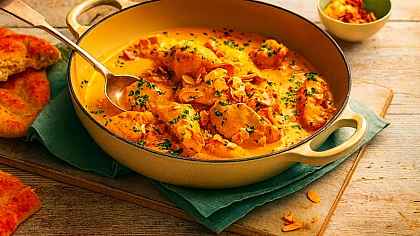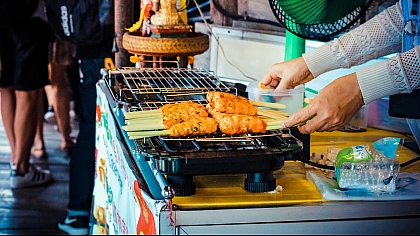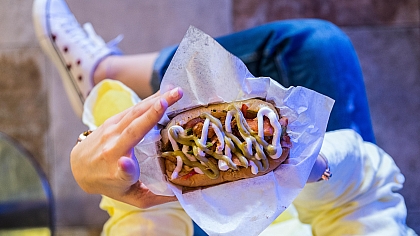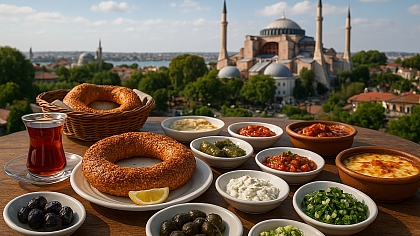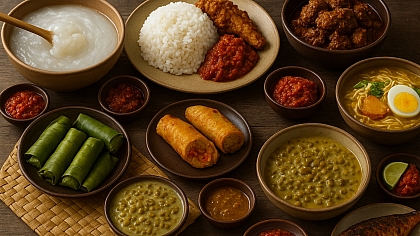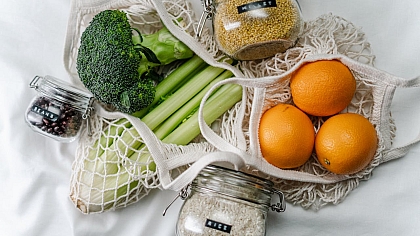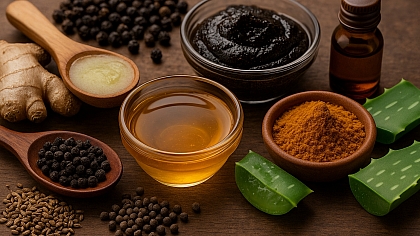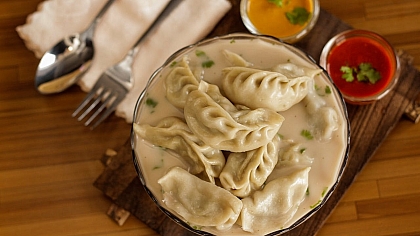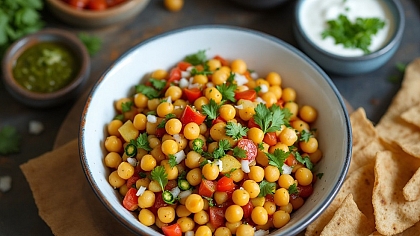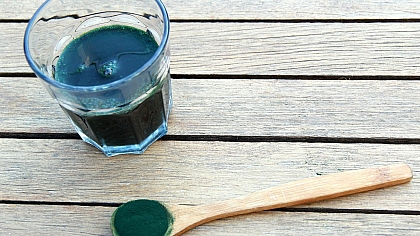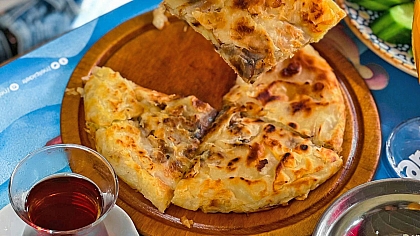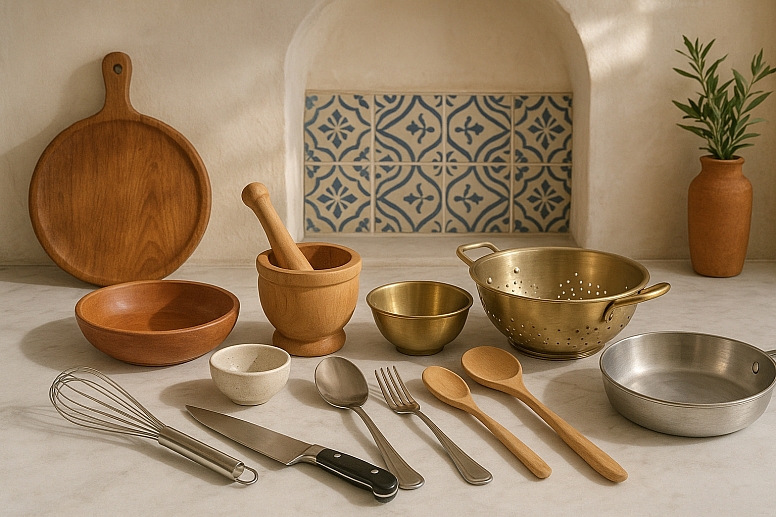
Essential Utensils for Making Authentic Middle Eastern Meze
The Tools Behind the Spread
A great Middle Eastern meze spread is a symphony of textures and flavors: creamy hummus, smoky baba ghanoush, crisp falafel, and bright, herbaceous salads. While the recipes are paramount, having the right tools transforms the preparation from a chore into a joyful, efficient process. The right utensil doesn't just make the job easier; it ensures authentic texture and depth of flavor that shortcuts can't replicate.
This isn't about having a kitchen full of single-use gadgets. It's about a curated collection of essential, multi-purpose tools that have been used for generations to create these iconic dishes perfectly.
The Non-Negotiable Basics
These tools form the foundation of meze preparation. Without them, achieving the right consistency and flavor is an uphill battle.
A Heavy Mortar and Pestle While blenders are fast, they cannot replace the crushing and grinding action of a granite or marble mortar and pestle.
- Why it's essential: It’s the only way to properly release the oils in garlic and fresh herbs for dishes like toum (garlic sauce) and to create the perfect paste for za'atar. Blenders bruise herbs and can make garlic unpleasantly sharp. The crushing action creates a creamy, emulsified texture that machines cannot.
- What to look for: A heavy, rough-textured interior (like unpolished granite) provides friction for grinding. A deep bowl prevents ingredients from flying out.
A High-Powered Food Processor For the ultra-smooth, cloud-like consistency of classic hummus or muhammara, a food processor is indispensable.
- Why it's essential: It purees cooked chickpeas and other ingredients into a perfectly smooth paste far better than a blender, which can leave a grainy texture. It’s also ideal for quickly chopping large volumes of herbs for tabbouleh.
- What to look for: A motor with at least 500 watts of power and a large capacity bowl (9+ cups) to handle batches.
A Sharp Chef's Knife and Large Cutting Board Meze is about fine chopping—parsley, mint, onions, tomatoes. A sharp knife is not a luxury; it's a necessity.
- Why it's essential: A dull knife crushes herbs, causing them to blacken and lose their fresh flavor. A sharp blade makes fine, clean cuts, preserving color and taste. A large board provides ample space for prepping multiple components.
- What to look for: An 8-inch chef's knife you feel comfortable with and a sturdy wooden or plastic board.
For Specific Meze Stars
Some dishes have a dedicated tool that makes all the difference in achieving an authentic result.
A Food Mill (Mouli) The secret to incredibly smooth hummus without having to peel every single chickpea.
- Why it's essential: Passing cooked chickpeas through a food mill separates the tender insides from the tough, papery skins. Removing the skins is the true secret to a silky, not gritty, hummus. It’s also perfect for making smooth tomato sauces for other dishes.
- Alternative: A fine-mesh sieve and a stiff spatula can work, but it requires more effort.
A Potato Ricer An unexpected tool that is brilliant for creating the perfect texture for falafel.
- Why it's essential: If you start with canned chickpeas (a common mistake), the dough will be too wet. For authentic falafel, you must use soaked, uncooked chickpeas. Ricing the soaked—but not cooked—chickpeas creates a coarse, fluffy-textured base that holds together when fried and results in a light, crispy interior.
A Grill or Gas Burner For achieving the signature smoky flavor of baba ghanoush.
- Why it's essential: Charring eggplants directly over an open flame blisters the skin and smokily cooks the flesh within. This cannot be replicated by baking. The smoky flavor is the soul of the dish.
- How to do it: Place whole eggplants directly on the grates of a gas stove burner or a hot grill. Turn frequently with tongs until the skin is completely charred and the flesh is collapsed and soft.
The Supporting Cast
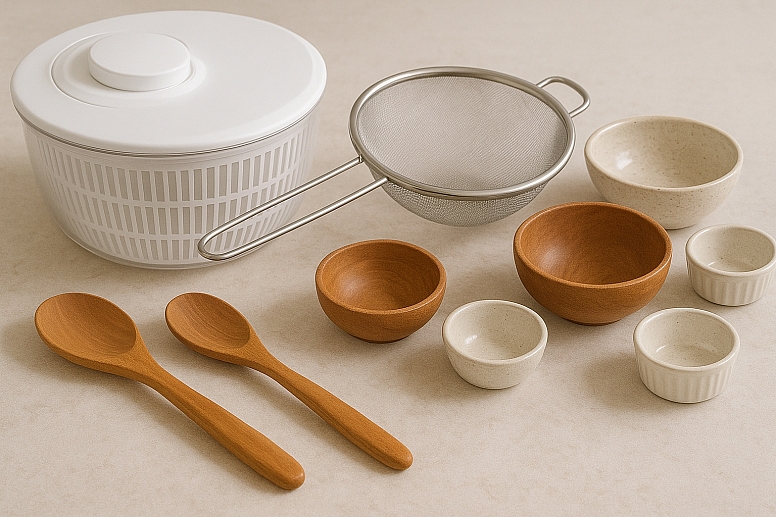
These tools streamline the process and help with presentation.
- Salad Spinner: Crucial for washing and thoroughly drying the vast amounts of flat-leaf parsley and mint needed for tabbouleh. Any residual water will make the salad soggy.
- Fine-Mesh Sieve: Used for rinsing grains like bulgur wheat, draining yogurt for labneh, and straining seeds from fresh pomegranate juice for drizzling.
- Wooden Spoons and Bowls: Wood is non-reactive, meaning it won’t impart a metallic taste to acidic dishes like lemon-dressed salads or pickled vegetables.
- Small Bowls and Ramekins: Essential for serving a proper meze spread. Having a variety of small dishes allows you to present each item separately, making the table look abundant and inviting.
Your Meze Utensil Questions, Answered
Can I use a blender instead of a food processor for hummus? You can, but the results often differ. Blenders require more liquid to get things moving, which can make the hummus too loose. They also tend to create more friction heat, which can slightly cook the garlic, altering its flavor. A food processor provides more control for a thick, spreadable texture.
Is a mortar and pestle really necessary if I have a food processor? For certain tasks, yes. A food processor chops and purees; it doesn't crush. To truly release the essential oils in garlic and fresh herbs without bruising them, the crushing action of a mortar and pestle is unmatched, especially for sauces like toum.
What's the best way to char eggplants if I don't have a gas stove? While a gas flame is ideal, you can use your oven's broiler. Place the eggplants on a baking sheet and broil them, turning occasionally, until the skin is charred and blistered. It will lack some of the direct smoky flavor, but it is a good alternative.
Do I need special tools to make falafel? The only special tool you might need is a potato ricer to achieve the perfect dry texture from soaked chickpeas. A standard food processor is still needed to blend the ingredients together. A dedicated falafel scoop makes forming the balls easier, but it's not essential.
Build Your Meze Toolkit
You don't need to acquire everything at once. Start with the core trio: a sharp knife, a food processor, and a mortar and pestle. These will open up a world of possibilities. Then, as you delve deeper, consider a food mill for sublime hummus or a ricer for perfect falafel.
Each tool serves a purpose in honoring the techniques that have defined this cuisine for centuries. With them, you can confidently create a beautiful, authentic meze spread that invites everyone to gather, share, and taste the care you've put into every bite.

